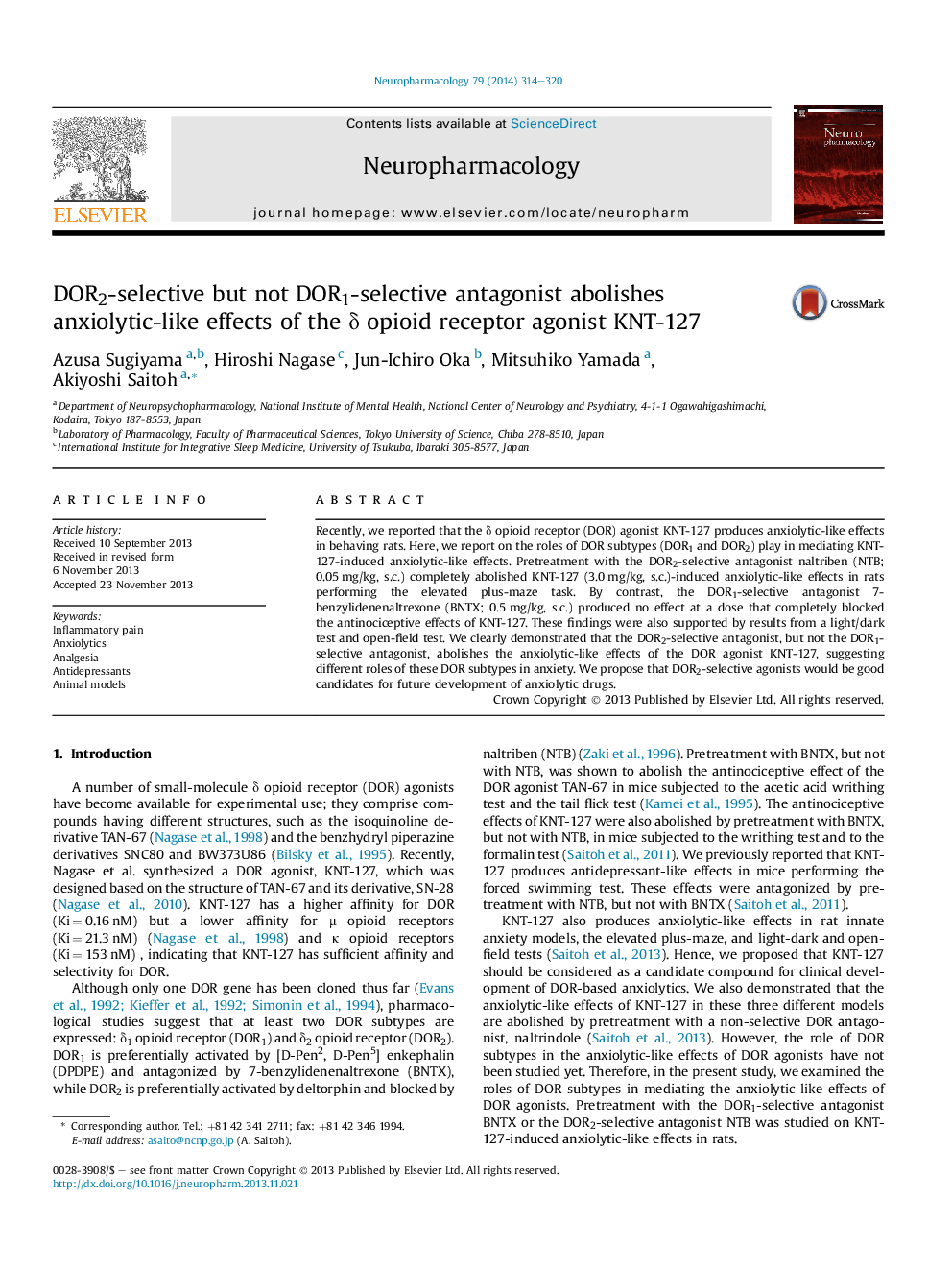| Article ID | Journal | Published Year | Pages | File Type |
|---|---|---|---|---|
| 5814611 | Neuropharmacology | 2014 | 7 Pages |
â¢A DOR2-selective antagonist abolishes the anxiolytic-like effects of KNT-127.â¢A DOR1-selective antagonist fails to alter the anxiolytic-like effects of KNT-127.â¢A DOR1-selective antagonist abolishes the antinociceptive effects of KNT-127.
Recently, we reported that the δ opioid receptor (DOR) agonist KNT-127 produces anxiolytic-like effects in behaving rats. Here, we report on the roles of DOR subtypes (DOR1 and DOR2) play in mediating KNT-127-induced anxiolytic-like effects. Pretreatment with the DOR2-selective antagonist naltriben (NTB; 0.05 mg/kg, s.c.) completely abolished KNT-127 (3.0 mg/kg, s.c.)-induced anxiolytic-like effects in rats performing the elevated plus-maze task. By contrast, the DOR1-selective antagonist 7-benzylidenenaltrexone (BNTX; 0.5 mg/kg, s.c.) produced no effect at a dose that completely blocked the antinociceptive effects of KNT-127. These findings were also supported by results from a light/dark test and open-field test. We clearly demonstrated that the DOR2-selective antagonist, but not the DOR1-selective antagonist, abolishes the anxiolytic-like effects of the DOR agonist KNT-127, suggesting different roles of these DOR subtypes in anxiety. We propose that DOR2-selective agonists would be good candidates for future development of anxiolytic drugs.
